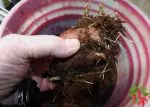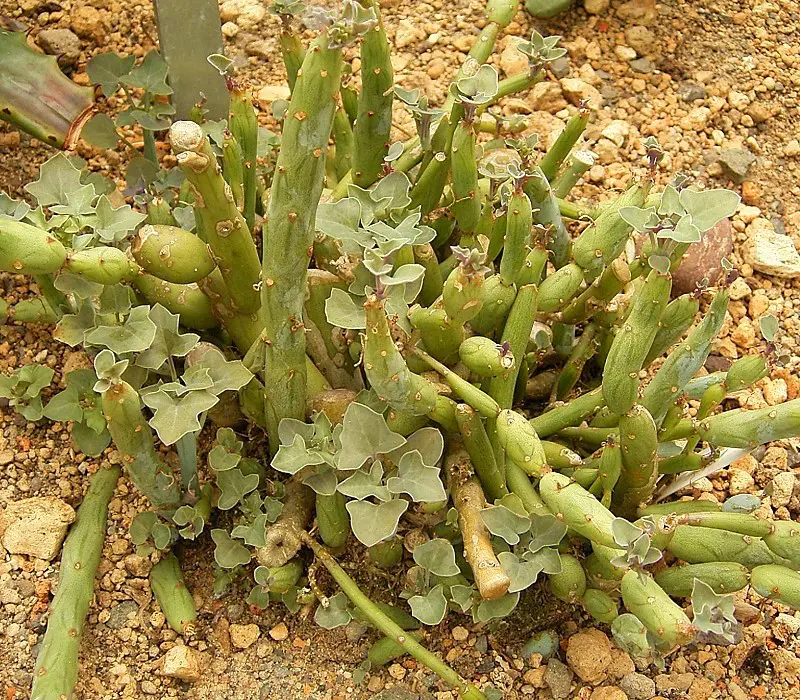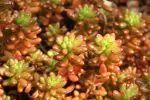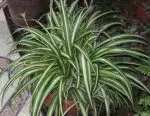This post contains affiliate links. If you buy something from one of our links we may earn a commission. Thanks
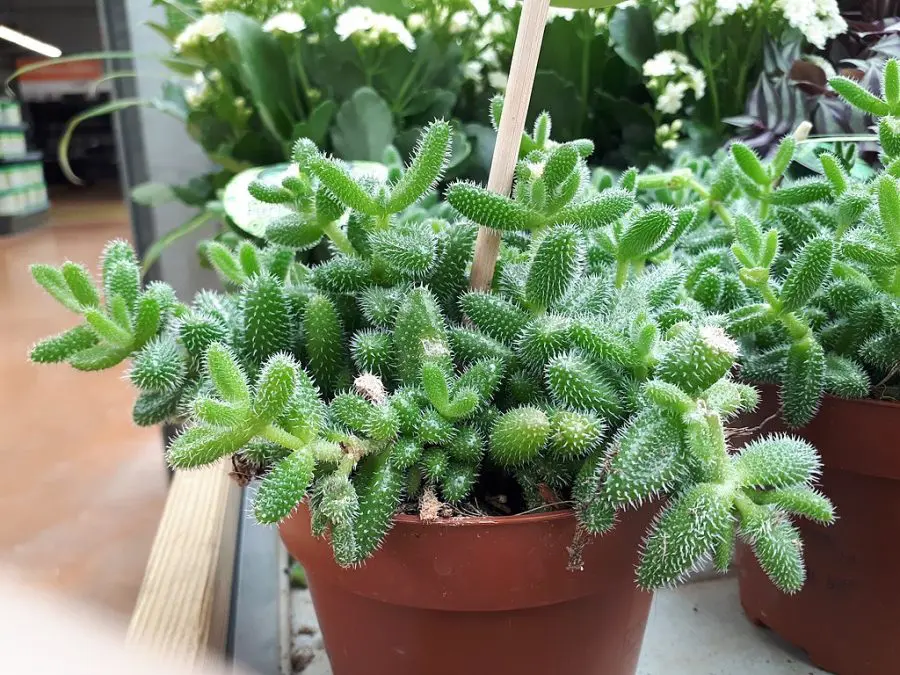
Discover the joy of pickle plant succulent care with our fun & easy guide! Get expert tips to help your quirky green buddy thrive indoors or out.
Pickle Plant or Delosperma echinatum succulent care involves well-draining soil, bright but indirect light, and infrequent watering. Water when the topsoil feels dry, and avoid letting the plant sit in water. It’s a low-maintenance plant that thrives with minimal fuss, making it ideal for both novice and experienced gardeners.
Welcome to the wonderful world of pickle plant succulent care!
If you’re looking to add a quirky and unique touch to your indoor or outdoor garden, you’ve come to the right place.
These delightful little plants, resembling plump little pickles, are sure to spark conversations and bring smiles to all who visit your green haven.
So, let’s dive into the essentials of pickle plant care and help your new leafy friend flourish in its new home.
Introduction to pickle plant succulent care
Today, we’re going to introduce you to the fascinating world of pickle plant succulent care.
This charming, low-maintenance plant adds a playful touch to any green space.
In this post, we’ll cover everything you need to know to keep your pickle plant happy and thriving, from choosing the perfect new pot and soil mix to watering, light requirements, and even propagation tips.
Get ready to explore the ins and outs of caring for this delightful succulent, and let’s grow together!
Meet the Playful Pickle Plant
Pickle plants, also known as Delosperma echinatum or Pickle Plant,” are quirky succulents that boast cylindrical leaves resembling miniature pickles.
These charming plants are native to South Africa and make an eye-catching addition to any indoor or outdoor garden.
With their vibrant green leaves and occasional bright yellow flowers, pickle plants are sure to become a favorite in your collection.
Let’s take a closer look at what makes these succulents so special!
A Peek Inside the Post
In this comprehensive blog post, we’ll cover everything you need to know to master pickle plant succulent care.
From selecting the right container and preparing the perfect soil mix to understanding your plant’s watering and lighting needs, we’ve got you covered.
But that’s not all! We’ll also delve into how to propagate your pickle plant, so you can share the love with friends and family.
Ready to embark on this exciting journey? Let’s dive in and help your unique green friend flourish in its new home!
Pickle Plant Delosperma echinatum: What This Post is About
In this post, we’re going to explore the delightful world of Delosperma echinatum, better known by its common name as the pickle plant.
These adorable succulents are not only a quirky addition to your plant family but also remarkably easy to care for.
We’ll dive deep into the specifics of pickle plant care, discussing everything from soil and pot selection to watering, lighting, and even propagation.
By the time you finish reading, you’ll be well-equipped to nurture and grow your very own pickle plant, adding a touch of whimsy to your indoor or outdoor garden!
Getting to Know Delosperma Echinatum
Is Pickle Plant Delosperma echinatum a succulent plant?
Yes, Delosperma echinatum is a succulent plant. It belongs to the family Aizoaceae and is native to South Africa.
This plant has cylindrical, finger-like leaves that are covered in tiny, white soft spines with white hairs.
The pickle plant flower it produces are small, daisy-like flowers in shades of pink, purple, or yellow.
Like all succulents, Delosperma echinatum is adapted to arid environments and has the ability to store water in its leaves, stems, and roots to survive periods of drought.
Delosperma echinatum, commonly known as the pickle plant, is a charming succulent plant native to South Africa.
This low-growing, spreading plant is part of the Aizoaceae family and is loved for its distinctive, pickle-like leaves that add a unique flair to any garden.
Standout Features and Characteristics
The pickle plant’s most striking feature is its cylindrical, fleshy leaves that look like tiny, plump pickles.
The leaves are a vibrant green color, and the plant occasionally produces small, daisy-like yellow flowers that add a pop of color to your collection.
The overall appearance of the pickle plant is both playful and intriguing, making it a fantastic conversation starter for your indoor or outdoor green space.
The Significance of Proper Care
As with any plant, providing the appropriate care for your pickle plant is crucial to its health and well-being.
By understanding its unique needs and preferences, you’ll be able to create an environment in which your pickle plant thrives.
Proper care not only ensures the plant’s longevity but also encourages it to produce those charming yellow flowers that are sure to brighten up your space.
By following the detailed care instructions covered in this post, you’ll be well on your way to nurturing a happy and healthy pickle plant!
Another Pickle Plant: Kleinia Stapeliiformis
Welcome to another exciting chapter in the world of pickle plants! Common names can be confusing and may not always be accurate.
In this section, we’ll introduce you to Kleinia stapeliiformis, a fascinating succulent also often referred to as the Pickle Plant or Senecio Stapeliiformis.
This intriguing plant offers a unique twist on the pickle plant theme, with its elongated, pencil-like leaves and striking appearance.
Let’s get to know this lesser-known cousin of Delosperma echinatum and explore what makes it an excellent addition to your succulent collection!
Say Hello to Kleinia Stapeliiformis
Kleinia stapeliiformis, often referred to as the Pickle Plant or Senecio Stapeliiformis, is a captivating succulent native to South Africa.
This unique plant is part of the Asteraceae family and showcases slender, cylindrical leaves that resemble pencils more than pickles.
It’s eye-catching appearance and easy-care nature make it a great addition to any succulent lover’s collection.
Contrasting Kleinia Stapeliiformis and Delosperma Echinatum
While both Kleinia stapeliiformis and Delosperma echinatum share the Pickle Plant nickname, they display quite different characteristics.
Delosperma echinatum boasts plump, pickle-like leaves and daisy-like yellow flowers, whereas Kleinia stapeliiformis features elongated, pencil-like leaves and unique reddish-orange flowers that resemble coral.
Despite their differing appearances, both plants are relatively low-maintenance and adapt well to indoor and outdoor environments.
A Worthy Addition to Your Succulent Collection
Kleinia stapeliiformis is definitely worth considering for your succulent collection, as it brings a touch of uniqueness and visual interest to your garden.
Its intriguing, pencil-like leaves and coral-like flowers create a striking contrast with other succulents, making it a fantastic focal point or conversation starter.
Plus, since it’s an easy-care plant, you can enjoy its beauty without the need for extensive gardening expertise.
So go ahead, and give Kleinia stapeliiformis a chance to shine in your collection!
Pickle Plant Indoor Care
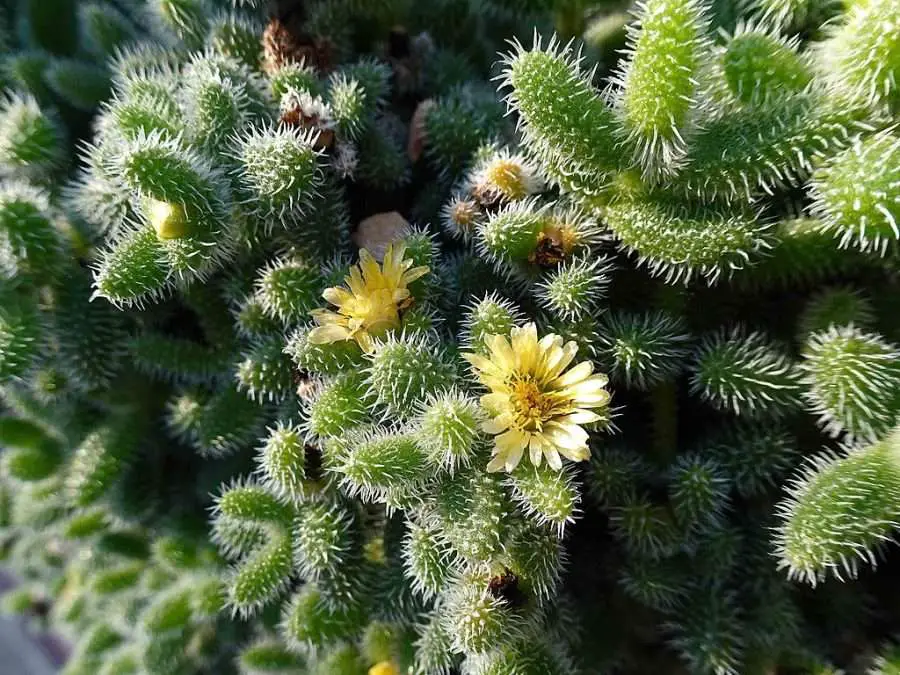
In this section, we’ll delve into the ins and outs of pickle plant indoor care.
Whether you’re a proud owner of a Delosperma echinatum or a Kleinia stapeliiformis, these low-maintenance succulents can thrive in the cozy confines of your home with just a little TLC.
From choosing the perfect spot to understanding their watering and lighting needs, we’ve got you covered.
So let’s get started and learn how to take care of a pickle plant.
Let There Be Light: Lighting Requirements
Pickle plants, whether Delosperma echinatum or Kleinia stapeliiformis love bright light and full sun.
You want to provide at least 6 hours of direct sunlight. Placing them near a south or east-facing window is ideal.
It’s ok if these plants receive some partial shade during the day too.
If natural light is limited, consider using a grow light to supplement their light needs and keep them healthy.
Staying Cozy: Temperature and Humidity Preferences
These succulents naturally grow in warm climates and prefer warmer temperatures, typically between 65-80°F (18-27°C).
Make sure to protect them from drafts and extreme colder temperatures or fluctuations.
While they can tolerate a range of humidity levels, a moderately humid environment is optimal.
A great option is to use a humidity tray or a room humidifier to maintain a comfortable atmosphere for your pickle plant.
Quenching Their Thirst: Watering Schedule
When it comes to watering, it’s essential to strike the right balance.
Overwatering can lead to root rot, while underwatering may cause the leaves to shrivel.
Allow the soil to dry out between waterings, and then water thoroughly, ensuring the excess drains away.
During the summer seasons if you have hot summer months you may need to water more frequently especially if you have a mature plant.
During the winter months, reduce watering frequency, as the plants enter a dormant period and require less moisture.
It is better to err on the side of caution and give your plant too little water rather than too much water.
Feeding Time: Fertilization Tips
Pickle plants don’t require much fertilization, but giving them a little boost during the growing season can help them thrive.
Use a diluted, balanced liquid fertilizer once every 4-6 weeks from spring to early fall.
Be cautious not to over-fertilize, as it can lead to weak, leggy growth and harm the plant.
During winter dormancy, there’s no need to fertilize, as the plant’s growth slows down.
Pickle Plant Soil
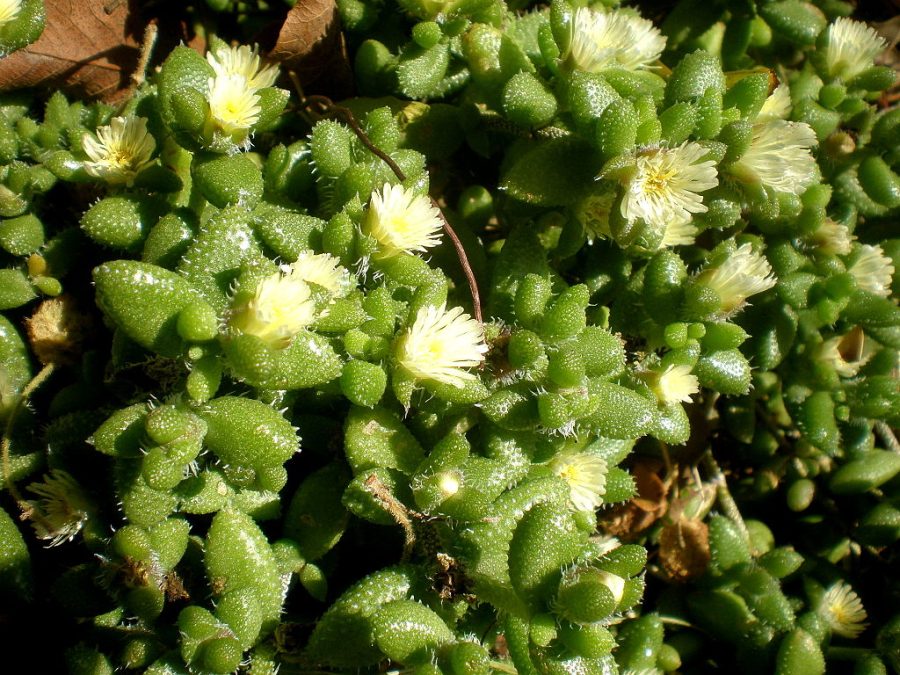
Ready to dive into the world of pickle plant soil?
Ensuring your Delosperma echinatum or Kleinia stapeliiformis has the perfect home starts with the right soil mix.
These succulents need well-draining soil to avoid root rot and keep them healthy.
In this section, we’ll share expert tips on choosing and creating the ideal soil blend for your pickle plant, setting the stage for a thriving and happy plant friend.
Let’s get our hands dirty and build a strong foundation for our charming pickle plants!
Drainage is Key: Coco Coir and Perlite
Well-draining soil is crucial for the health and longevity of your pickle plant.
A mix that includes coco coir and perlite helps provide the perfect balance of aeration and drainage, ensuring your plant’s roots won’t be sitting in water and preventing root rot.
Both coco coir and perlite are excellent at retaining moisture while allowing excess water to drain away, creating an ideal environment for your plant.
The Perfect Blend: Ideal Soil Composition
An optimal soil composition for pickle plants is one that retains moisture without becoming waterlogged.
A mix that includes organic matter, such as coco coir, provides essential nutrients and promotes healthy root growth.
Combined with inorganic materials like perlite, the soil becomes well-aerated and drains effectively, which is vital for preventing root rot and other excess moisture-related issues.
DIY Soil Mix Recipe: 50/50 Coco Coir and Perlite
Creating your own pickle plant soil mix is a fun and cost-effective way to ensure your plant has the perfect environment to thrive.
A simple 50/50 mix of coco coir and perlite is a great starting point. This blend provides a well-draining, nutrient-rich base that promotes healthy growth.
Just combine equal parts of coco coir and perlite in a large container, and mix thoroughly. Voilà! You now have a custom soil mix ready for your pickle plant.
Store-Bought Solutions: Commercial Soil Mix Recommendations
If you prefer purchasing a commercial soil mix, there are options available that cater specifically to succulents and cacti.
These mixes typically include ingredients such as peat moss, coco coir, perlite, and sand, which create a well-draining and nutrient-rich environment for your pickle plant.
Brands like Miracle-Gro, Espoma, and Harris offer succulent and cactus mixes that are suitable for your plant.
Just be sure to check the ingredients and opt for a mix with good drainage to keep your pickle plant happy and healthy.
Pickle Plant Cactus Propagation
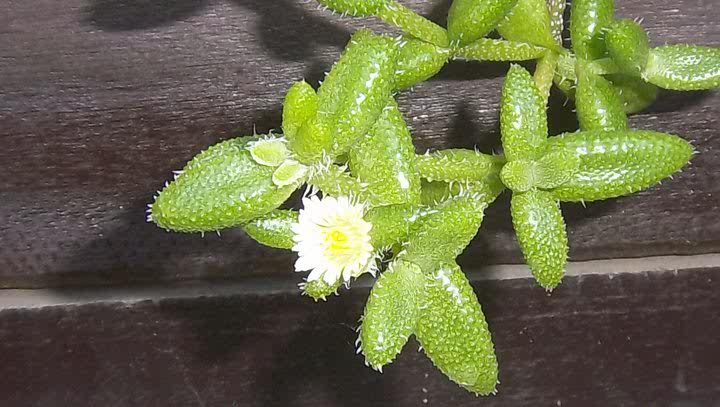
Get ready to share the love with pickle plant cactus propagation!
Whether you have a Delosperma echinatum or a Kleinia stapeliiformis, learning how to propagate these delightful succulents is a fun and rewarding experience.
In this section, we’ll explore the simple process of creating new plants from your existing ones, so you can spread the joy of pickle plants to friends, and family, or expand your own collection.
Let’s dive into the world of propagation and multiply the charm of these captivating plants!
Choose Your Method: Pickle Plant Propagation Techniques
Stem Cuttings
One of the most popular methods for propagating pickle plants is by taking stem cuttings.
Simply snip off a healthy stem from the mother plant, allow it to callous over for a day or two, and then plant it in well-draining soil.
Leaf Cuttings
Another option for propagation is leaf cuttings. Gently twist off a healthy leaf from the base of the plant, let it dry and callous for a few days, and then place it on top of moist, well-draining soil.
New roots and a tiny plant will begin to emerge from the base of the leaf in a few weeks.
Division
For more established plants, division is an effective method.
Carefully remove the plant from its pot and gently separate the root ball into smaller sections, each with its own roots and shoots.
Plant each division in its own pot filled with well-draining soil.
Steps to Success: A Propagation Guide
• Choose your method: stem cutting, leaf cutting, or division.
• Prepare the cutting or division by allowing it to callous or dry for a few days.
• Plant the cutting or division in a well-draining soil mix.
• Place the new plant in a bright spot with indirect sunlight.
• Keep the soil slightly moist until new growth appears, indicating that the cutting has rooted successfully.
Propagation Pro Tips: Maximize Your Success Rate
• Always use clean, sterilized tools to prevent the spread of diseases and pests.
• Choose healthy, disease-free plant material for the best chance of success.
• Be patient – propagation can take time, and not every cutting will take root.
• Keep new cuttings or divisions in a warm environment with consistent temperatures to encourage root development.
• Avoid overwatering your new plants, as this can lead to root rot and other issues.
Pickle Plant Hanging Basket
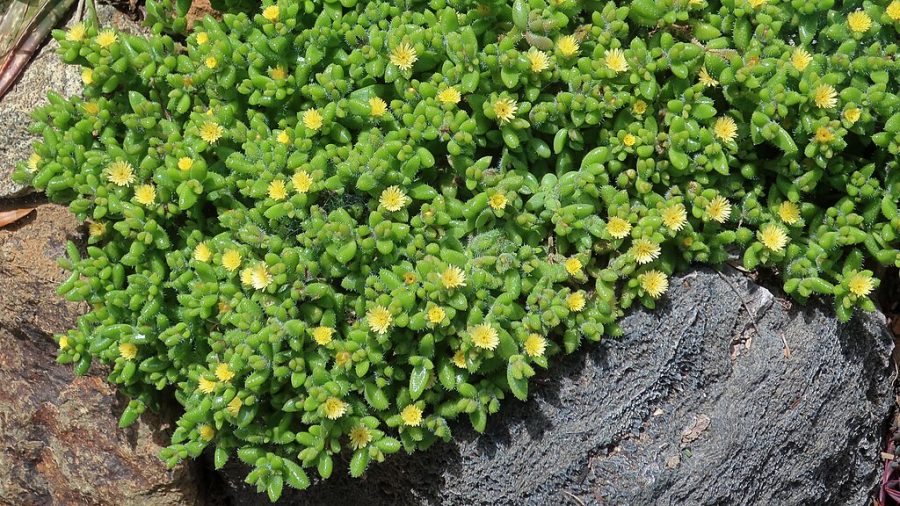
Ready to elevate your pickle plant game? In this section, we’ll explore the wonderful world of pickle plant hanging baskets!
These charming plants, whether Delosperma echinatum or Kleinia stapeliiformis, look stunning when suspended in mid-air, creating a lively vertical display that adds a touch of whimsy to any space.
We’ll guide you through the process of selecting and creating the perfect hanging basket, as well as discuss the special care considerations that come with this unique setup.
Let’s get ready to make your pickle plants soar!
Hanging High: Benefits of Growing Pickle Plants in Hanging Containers
Growing pickle plants in hanging containers can offer several advantages, such as:
Space-saving: Hanging baskets utilize vertical space, making them perfect for small apartments or balconies.
Enhanced Aesthetics: Suspended plants add a unique visual element to your home or garden, creating a dynamic and eye-catching display.
Better Air Circulation: Hanging plants enjoy improved air circulation, which can help prevent diseases and pests.
Selecting the Perfect Planter: Choosing the Right Hanging Container
When choosing a hanging planter for your pickle plant, consider the following factors:
Material: Opt for a planter made from materials like terracotta, ceramic, or plastic that allow for good drainage and breathability.
Drainage: Ensure the planter has adequate drainage holes to prevent waterlogging and root rot. If you have a pot without a drainage hole
try to drill some yourself.
Size: Select a planter that provides enough room for your plant to grow and spread, but avoid excessively large containers that may retain too much moisture.
Hanging in Harmony: Proper Installation and Care
Installation: Securely install your hanging basket in a spot with bright, indirect sunlight, and ensure it is safely anchored to support the weight of the plant and planter.
Watering: Be mindful that hanging plants may dry out more quickly than those in traditional containers, so monitor the soil moisture regularly and adjust your watering schedule accordingly.
Maintenance: Regularly inspect your hanging pickle plant for signs of pests, diseases, or other issues, and trim away any dead or damaged foliage to keep it looking its best.
Pickle Plant Problems
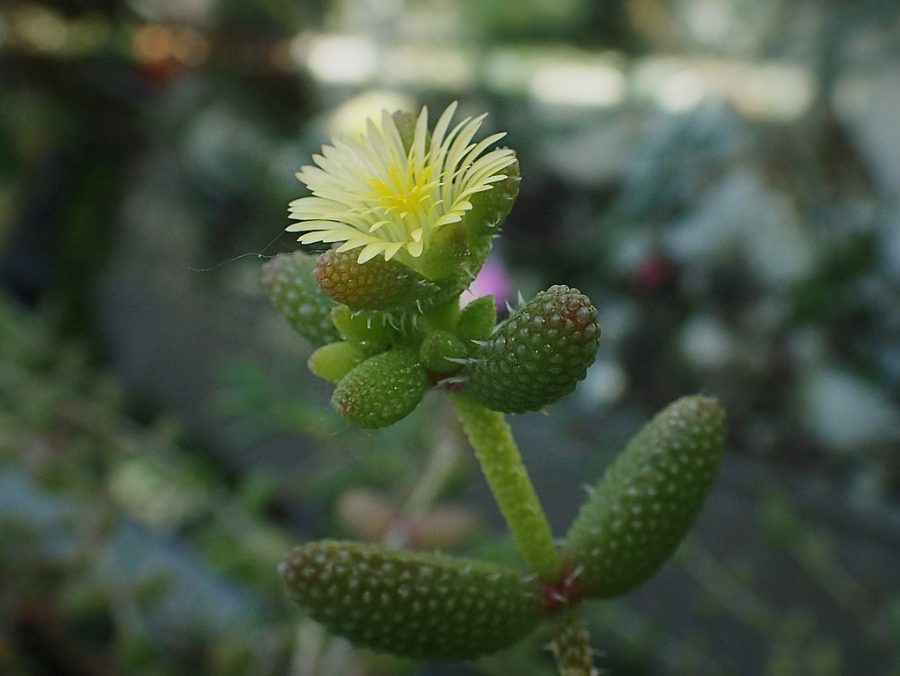
While pickle plants are generally low-maintenance, they can sometimes encounter a few bumps along the road.
In this section, we’ll tackle some common pickle plant problems, whether you’re nurturing a Delosperma echinatum or a Kleinia stapeliiformis.
From identifying potential issues to providing solutions, we’ve got your back in ensuring your plant’s health and happiness.
Let’s delve into the world of pickle plant troubleshooting and help you become a plant care superhero!
Plant SOS: Common Issues and Their Causes
Overwatering
Overwatering is a common issue that can lead to root rot and other complications in your pickle plant. Symptoms include yellowing leaves, soft or mushy stems, and a foul smell emanating from the soil.
Underwatering
Underwatering can cause your pickle plant to become dehydrated, leading to shriveled leaves, slow growth, and even leaf drop. This issue is generally easier to remedy than overwatering.
Pest Infestations
Pickle plants can occasionally fall prey to pests such as mealybugs, spider mites, or aphids. These critters can cause damage to your plant, leaving behind discolored or distorted leaves and hindering growth.
Problem Solved: Prevention and Treatment Methods
Overwatering: Adjust your watering schedule to allow the soil to dry out between waterings, and ensure the pot has proper drainage.
In severe cases, repot the plant in fresh, well-draining soil to promote recovery.
Underwatering: Gradually increase your watering frequency, ensuring the soil is consistently moist but not waterlogged.
Monitor your plant’s progress and adjust as needed.
Pest Infestations: Remove pests by wiping them off with a damp cloth or spraying your plant with insecticidal soap or neem oil.
Prevent future infestations by regularly inspecting your plant and maintaining proper care.
Plant Doctor: Tips for Keeping Your Pickle Plants Healthy
Provide adequate light: Ensure your pickle plant receives bright, indirect sunlight to promote healthy growth and prevent legginess.
Use well-draining soil: A well-draining soil mix prevents root rot and other moisture-related issues.
Monitor temperature and humidity: Maintain consistent temperature and moderate humidity levels to create a comfortable environment for your plant.
Fertilize sparingly: Feed your pickle plant with a diluted, balanced fertilizer during the growing season, but avoid over-fertilizing to prevent weak, leggy growth.
Regular check-ups: Inspect your plant frequently for signs of pests, diseases, or other issues, and address them promptly to keep your pickle plant in tip-top shape.
Pickle Plant Succulent FAQs
Navigating the world of succulent care can sometimes feel like a maze.
The Pickle Plant, also known as Delosperma echinatum, is an intriguing addition to your collection and has its own unique set of care requirements.
It’s a charming plant known for its pickle-like leaves and vibrant yellow flowers, but you might find yourself wondering how to ensure that it thrives.
To clear up some common questions, we’ve compiled this FAQ to offer helpful insights into Pickle Plant care and maintenance.
Q: How often should I water my Pickle Plant?
A: Water your Pickle Plant when the topsoil feels dry to the touch. Overwatering can lead to root rot, so it’s better to err on the side of less water.
Q: Does the Pickle Plant require a lot of light?
A: The Pickle Plant prefers bright, indirect light. While it can tolerate some direct sunlight, too much can scorch its leaves.
Q: Can the Pickle Plant be propagated?
A: Yes, the Pickle Plant can be easily propagated by leaf or stem cuttings. Simply let the cut surface callus over for a few days before planting it in soil.
Q: Is the Pickle Plant safe for pets?
A: Delosperma echinatum is not known to be toxic to pets, but it’s always best to consult with your veterinarian for advice tailored to your specific animal’s needs.
Pickle Plant Succulent Care Final Thoughts
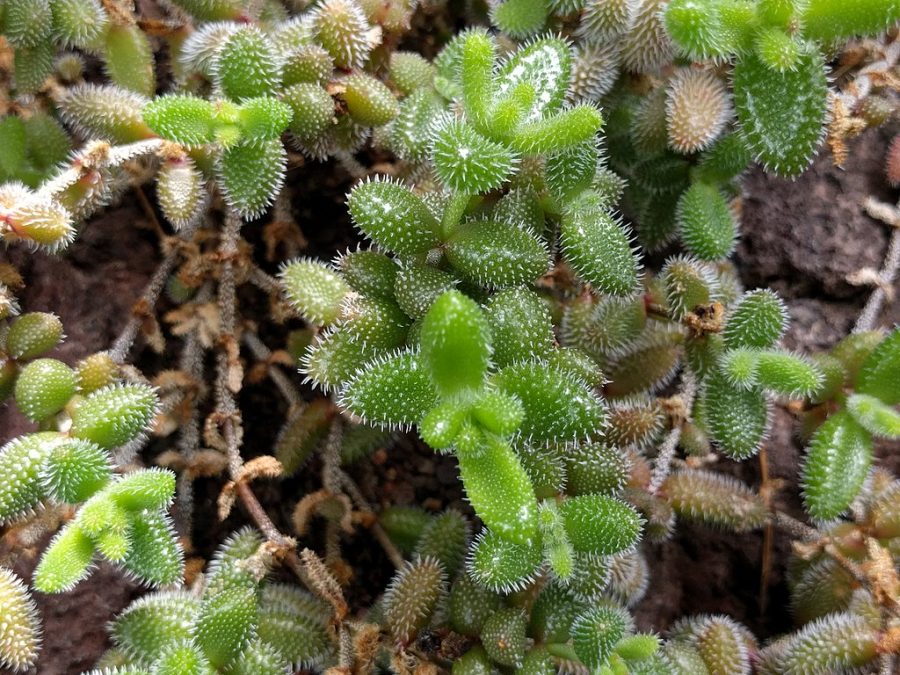
As we wrap up our journey through the fascinating world of pickle plant care, we hope you’ve discovered valuable insights and tips to help your Delosperma echinatum or Kleinia stapeliiformis flourish.
From the perfect soil mix to propagation techniques and troubleshooting common issues, armed with this knowledge, you’re well on your way to becoming a pickle plant pro!
Remember, the key to a thriving plant is a loving and attentive caregiver.
So, keep nurturing your green friends, and watch them reward you with their captivating charm and beauty. Happy growing!
Plant Care Essentials: Recap of Key Points
Proper Soil: Use a well-draining soil mix to prevent root rot and promote healthy growth.
Light and Temperature: Provide bright, indirect sunlight and maintain a consistent temperature for a happy plant.
Watering and Fertilizing: Water moderately, allowing the soil to dry out between waterings, and fertilize sparingly during the growing season.
Propagation: Explore various propagation methods, such as stem cuttings, leaf cuttings, and division, to expand your collection.
Troubleshooting: Identify common issues and learn how to prevent and treat them to keep your plants healthy.
Green Thumbs Unite: Encouragement for Readers to Try Growing Pickle Plants
Now that you’re equipped with the knowledge to care for pickle plants, we encourage you to try growing these captivating succulents!
With their unique appearance and low-maintenance nature, pickle plants make wonderful additions to any indoor or outdoor garden.
You’ll find that nurturing these beauties can be a truly rewarding and enjoyable experience.
Read more: 10 Benefits Of Succulent Plants Indoors And They’re Easy To Grow





